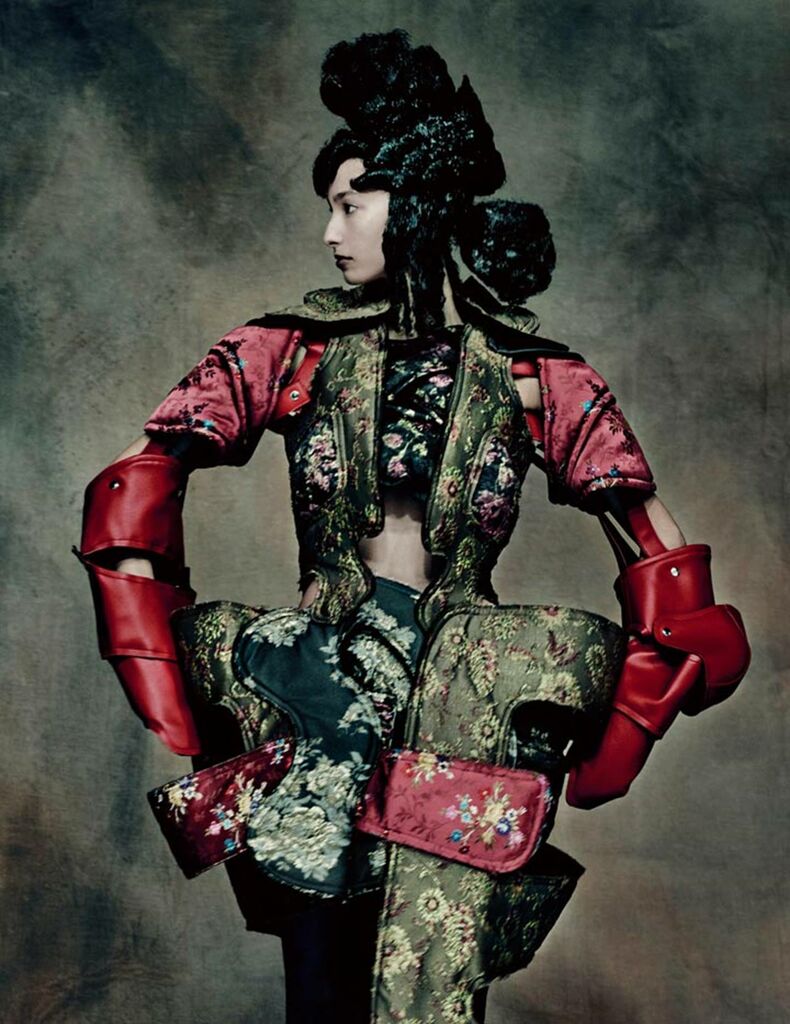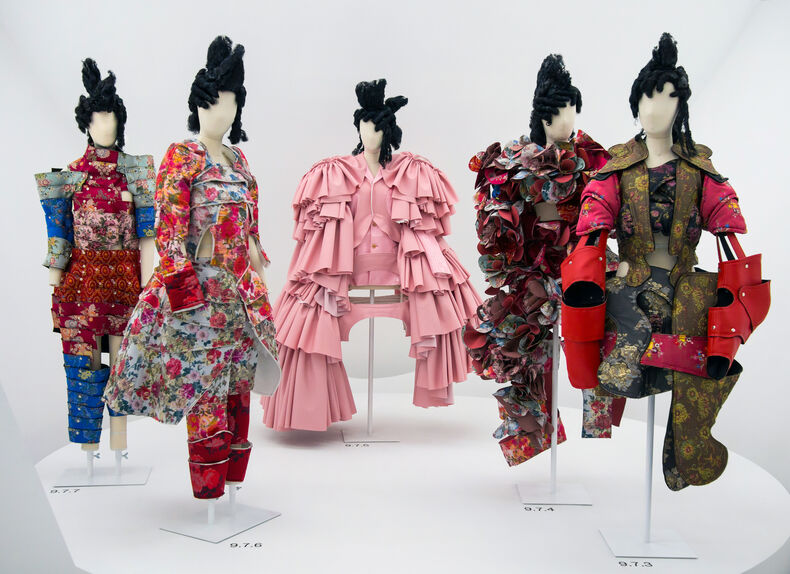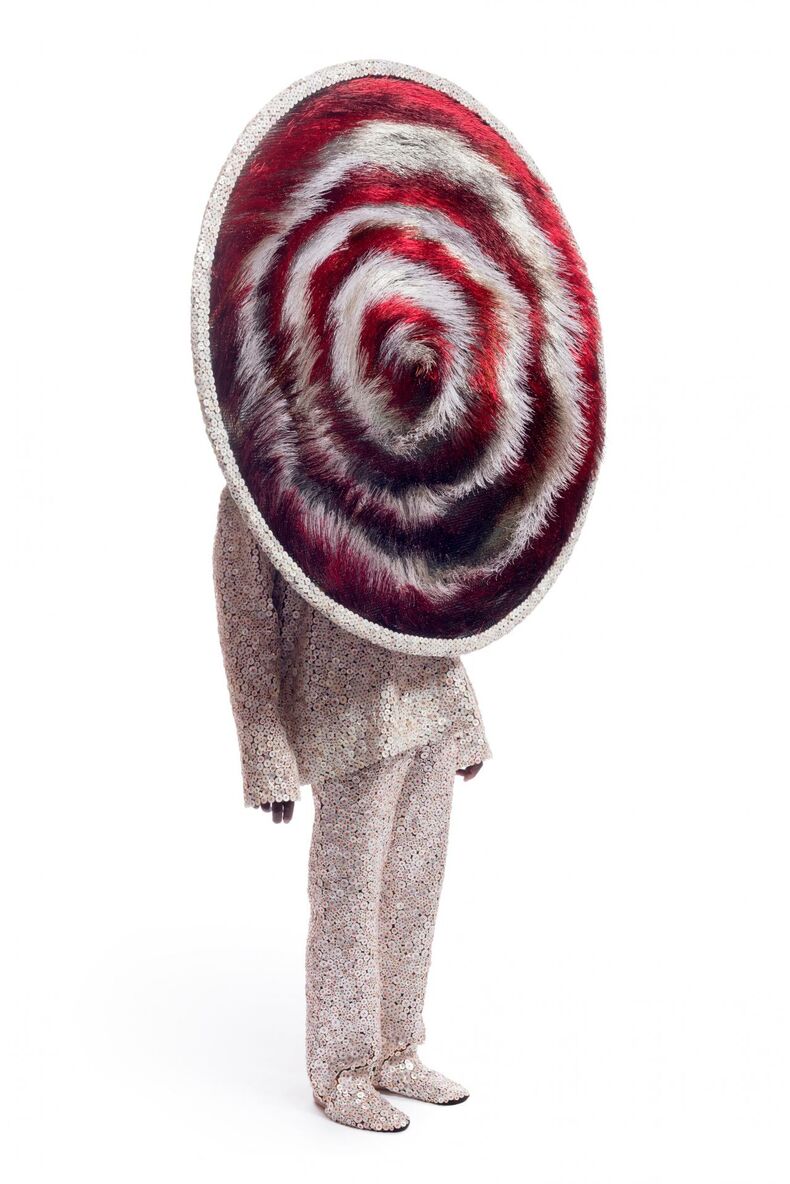- Computer
- Notebook
- Pens
- Printer (if you want physical images)
1
Hunt and Gather
Let's take a break from making, but before we start analysing other artists' works, we need to learn some design terminology. Having an understanding of design elements and principles will help you make educated and meaningful analyses.
Equipment
Guiding Questions
Think about these questions as you work your way through the lesson:
Lesson content
With any art and design practice, it is important to know some context. Having some knowledge about WHO and WHAT is out there will help you contextualise your work and find where you might fit in.
Finding artists who bridge the gap between garments and art, such as Rei Kawakubo and Nick Cave will open your eyes to what ‘wearable art’ can mean.
But first, let's learn a little about Design Elements and Principles. These will make looking at other artists' work a lot more meaningful. First, here are the Elements of design:

Rei Kawakubo
The silhouette of the garment.
Outline and style lines: lines that divide up space and lead the eye within the form - belt, ruffles, seam, pocket, a colour line.
Hues, colour groups (primary, secondary, tertiary, quaternary, complimentary, monochrome, earth tones, a limited palette), tints, and shades.
The feel of the material, the way it drapes, the visual effect it creates.
The size, number, and amount of elements in relation to each other.
Symmetry or asymmetry.
The sense of completeness: do the elements ‘sing’ together or does one dominate?
Repetition of line, colour, texture, trims, shapes or details that create a pattern throughout the design.
The p+art of the design that draws your eye and demands your attention. Could be any element.
When viewing designers work, think about HOW and WHERE you have seen these elements are principles being used. Consider the importance of these things and how they enrich the overall design.
Rei Kawakubo is a Japanese, Tokyo based fashion designer. She is an absolute powerhouse in fashion design and innovation, being the founder of Comme des Garçons and the Dover Street Market. In 2017, a show entitled, ‘Rei Kawakubo/Comme des Garçons Art of the In-Between’ was exhibited at the Museum of Modern Art in New York City. The exhibition was a celebration of Kawakubo’s body of work, a glorious mixture of high fashion and fine art.

The Rei Kawakubo/Comme des Garcons Art of the In-Between show at the Met
Nick Cave is an American performance artist who, amongst many other artworks, makes ‘Soundsuits’. These pieces of wearable art are sculptural and deeply political and cultural. A large part of Cave’s work is based around movement and dance and creating art that moves with the body.

Nick Cave Soundsuit
Instructions
First up, do some research on artists/fashion designers working with ‘wearable art’. If you’re stuck, you can start off using our examples; Rei Kawakubo and Nick Cave. Or you can dig a bit deeper and find at least two other designers whose work you are intrigued by.
Once you have secured your designers, find out a little more about them, such as where they are from and what inspires their work.
Now look through their catalogue of relevant wearable artwork and select at least TWO garments per designer to analyse.
Referring to the elements and principles of design from earlier in this lesson, try to identify what is being used in your chosen examples. Also, consider what themes/inspirations/prompt the designer may have been working with - this may give you some ideas (use the DE+P analysis sheet in the resources section).
You should now have a better understanding of how design elements and principles intersect with good design. What in particular were you interested in during this process? Use of line? Colour? Or maybe even the backstory of the designer and their garment.
Video Resources
Resources